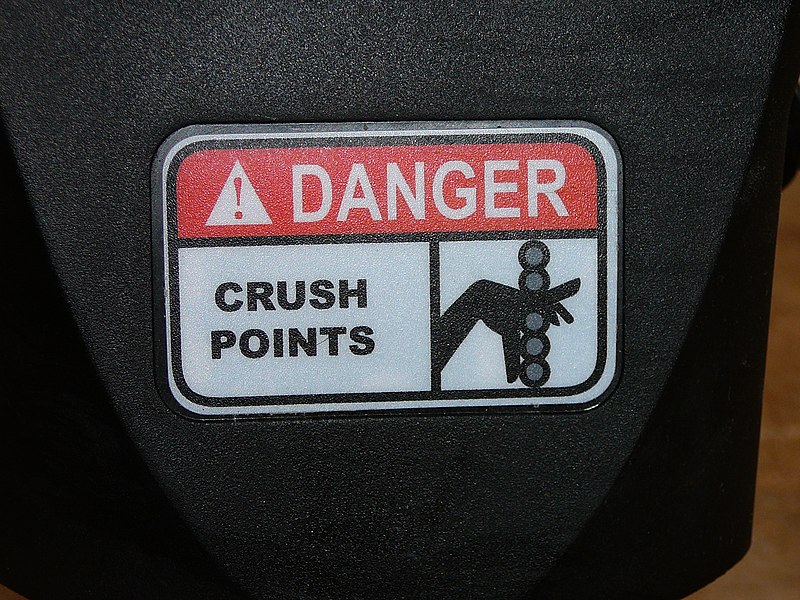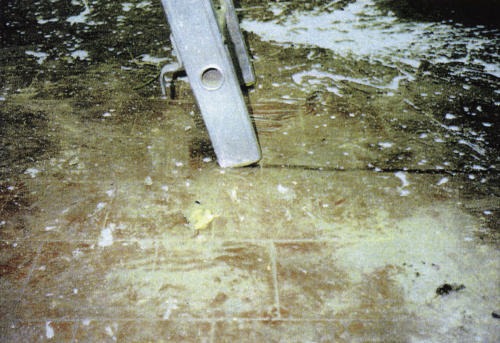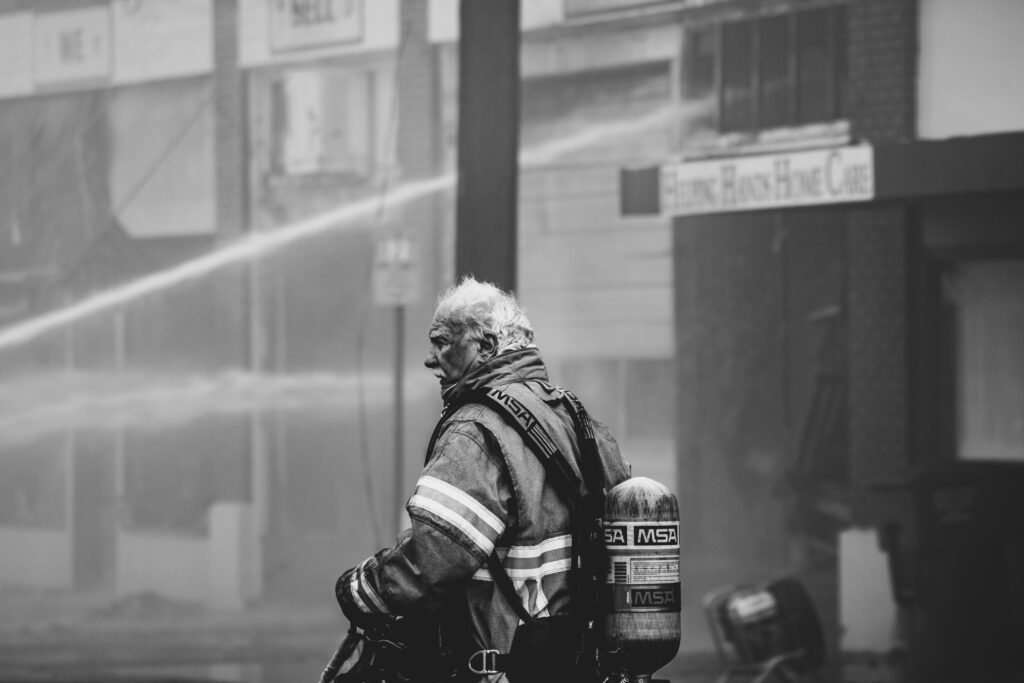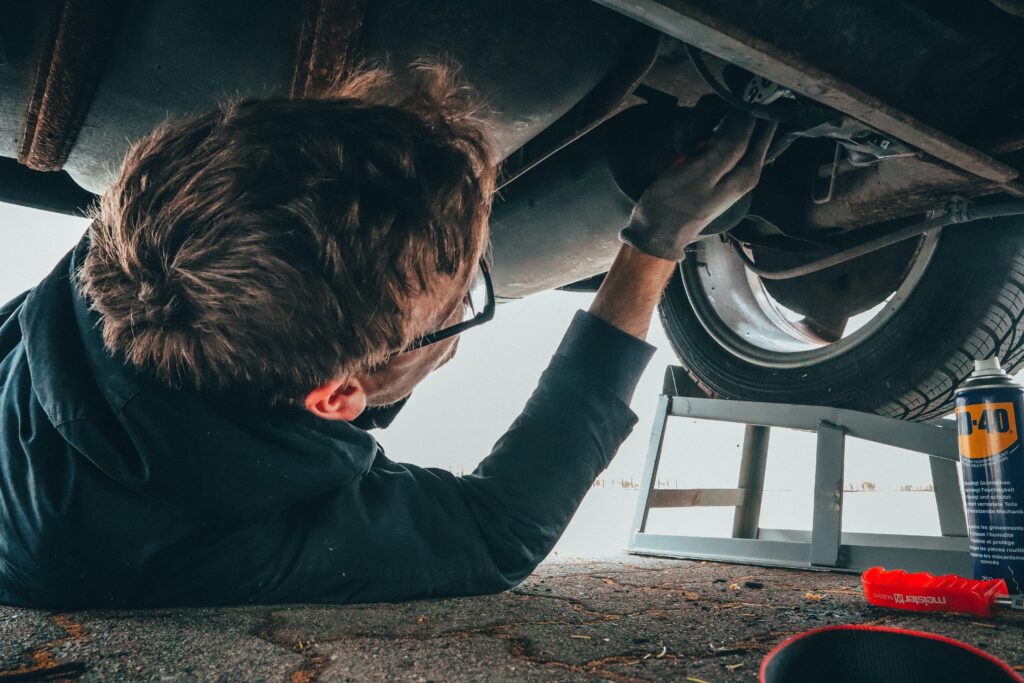Hire a personal injury lawyer! Employers must provide a safe working environment. This obligation is not always met. The result is that many occupational accidents happen. If someone is injured in an occupational accident (in Dutch: bedrijfsongeval) and there is an injury, the employer is liable for the damage that the employee incurs as a result of the accident at work.
What is a personal injury?
Damage as a result of an industrial accident is called personal injury. Personal injury consists of material damage and immaterial damage, also known as compensation. Material damage can be valued in money. This concern costs that are incurred, such as medical costs and travel costs. Other material loss items are loss of income in the event of incapacity for work, loss due to study delay, and costs for calling in household help. Grief money is compensation for pain complaints that a personal injury victim suffers as a result of an industrial accident, but it is also compensation for complaints of anxiety, grief, and unsightly scars. Calculation of smart money is not possible. Therefore, it is determined based on a guide of past lawsuits. This guide is called the pain relief guide.
What does a personal injury lawyer do?
A personal injury lawyer is a lawyer who is engaged in the recovery of personal injury claims as a result of an industrial accident, a traffic accident, or a medical error. But a personal injury lawyer is also involved in claiming damage after a dog bite, a fall over a loose sidewalk tile, and even in the event of abuse, he helps the victim to recover personal injury claims.
A personal injury lawyer holds the person responsible for the damage event liable. This is done by means of a liability claim. It states what happened, the expiry date is countered and the damage claim is stated. After recognition of liability, a personal injury lawyer (in Dutch: letselschade advocaat) draws up a damaging statement. This contains all damage that the victim suffers as a result of, for example, a traffic accident. Advance payment is also arranged immediately so that the person entitled to compensation does not have to prepay the costs incurred and damage suffered.
Negotiation is also one of the duties of the personal injury lawyer. He does this with the liable party. This person is often insured against liability, for example, an employer in an occupational accident. Negotiations therefore usually take place with the personal injury insurer.
What is an occupational accident?
An occupational accident is an accident that happens at work. It is often the result of an unsafe workplace, a broken machine, or a fall from scaffolding. But an accident at work also occurs due to a mistake made by a colleague. The employer is then also liable, as stated in the law.
An employer is not only liable for damage suffered by its employees. More and more people work as self-employed entrepreneurs for a company. They are therefore not employed by the employer. In the past, these self-employed persons were not entitled to compensation from the employer under Dutch law. If they were not insured against incapacity for work, they had to bear their own damage. This caused major problems in the event of incapacity for work.
The Dutch legislator did not think this was reasonable and therefore amended the law. Since the amendment of the law, other people who work for a company, other than salaried people, are also entitled to personal injury compensation if they are injured at work.
Ways to prevent occupational accidents
It is never too late to start over, and now is a fantastic moment to do so. Although one would assume that you already do all of these things, here are some fundamental guidelines to put into practice (or review) in order to prevent workplace mishaps.
- Be vigilant at all times when working. At work, distractions, exhaustion, substance misuse, and poor spatial awareness can be fatal and cause serious accidents. Particularly fatigue might have disastrous results.
- Encourage education and awareness of safety. The majority of safety experts will agree that adequate training is just as critical as policy, if not more so. Employees must comprehend the hazards present at work, as well as how and why what they perform might result in damage or even death.
- Understand musculoskeletal injuries (MSIs) and disorders (MSDs). Many industrial injuries are the result of poor ergonomics; from workplaces to construction sites, poor posture and other ergonomic issues can have extremely severe effects. Employers must be proactive in preventing workplace accidents.
- Employers may be required to equip employees with some kind of PPE depending on provincial rules. Protective equipment, such as gloves or face masks, is unquestionably required in a variety of industries during the present epidemic. Providing sufficient PPE is another important factor in boosting worker trust.
- Keep your office tidy and speak clearly. The basic requirement of maintaining a tidy workplace or site eludes certain businesses. Simple tasks like keeping track of inventory, ensuring that the floor is clear and that exits are not obstructed, providing safety data sheets for chemicals on-site, etc., must be completed. Signage should also be utilized to inform employees.
- Make sure everyone is dressed properly. Wearing the appropriate protective clothes is necessary for addition to PPE. Additionally, it is not just about the clothing; it is also about the fit. A major safety concern is loose or improperly fitting clothes that might snag or cause a trip (particularly for women, who still suffer from improperly fitted PPE).
- Look out for any dangers. Last but not least, while it may seem like a simple step, knowing which dangers are present at work is essential to accident prevention. The same guidelines cannot be applied universally. A fantastic strategy to keep track of possible risks and possibilities for improvement is to step up inspections of locations and equipment.

https://commons.wikimedia.org/wiki/User:Bastique
Benefits of Prevention
Employers that take the proper precautions to avoid accidents at work may profit in a variety of ways. In addition to lowering the frequency of workplace accidents, managers could:
- Being less susceptible to legal action
- Improve your standing with clients, suppliers, partners, and investors.
- Have staff that are more motivated and working more productively
- Cut expenses
- Have decreased absenteeism and turnover rates among employees. Over 2,000,000 working days are reportedly lost annually only from handling accidents, slips, and trips. 2018 had a 10% drop-in work accident rate in Argentina compared to 2017.
What to do after an occupational accident
After an occupational accident, it is important that the accident is reported. In the event of permanent injury and hospitalization, the employer must report an accident to the labor inspectorate. An investigation then follows and the labor inspector draws up a report. If the employer can be blamed for the industrial accident, a fine will be imposed.
The injury will have to be determined after an industrial accident. That is why a victim of an industrial accident should receive medical treatment. Sometimes the injury is so serious that the victim is taken to the hospital for treatment of the injury. If this is not the case, the person who suffered the industrial accident must report the accident and his or her injury to the employer himself or herself. This can be done by means of an accident form or by witness statements.
Compensation after an occupational accident
Ultimately, the person who suffered the industrial accident will receive compensation for his or her damage. In the event of incapacity for work, the employer will, according to Dutch law, have to continue to pay the salary in full for the first year. After 1 year, only 70% of the salary has to be paid. From the 3rd year on, the employer may dismiss the employee. From that moment onwards he will receive a disability benefits. The damage is described in an agreement between the injured employee and the insurer’s insurer. After signing this settlement agreement, the personal injury case comes to an end.
Causal Factors
Accidents are caused by risky conduct or circumstances. The organizational safety environment or culture is a significant aspect. Safety culture, which consists of the shared attitudes, beliefs, perceptions, and values among employees, has to do with how workplace safety is managed. Serious human injuries can also result from defective equipment; accidents using defective ladders are a classic example. The base of the aluminum stile can unexpectedly slip on a hard floor if the rubber feet are missing, which puts the user at risk of falling.
Occupational Accidents: Common Causes
The workplace may be risky, and this risk is increased in an industrial setting. Accidents can be caused by a variety of things, from excessive exertion to improper handling of dangerous items. A workplace event can also be caused by or affected by a wide range of factors. Here are eight of the most typical reasons for occupational accidents:
Lifting
Because they are lifting something that is too heavy for them to lift alone, many employees are susceptible to spraining, straining, or tearing a muscle. Remember that there is no danger in asking for assistance while lifting heavy goods.
Fatigue
Accidents can also happen when people do not take breaks. Employees must get enough rest in order to recuperate from strenuous manual labor. Failure to do so might result in several health issues, including atrophy and general exhaustion. One of these outcomes might have significantly greater negative effects than pausing for ten minutes.
Dehydration
Additionally, dehydration might have severe effects. On very hot summer days, not getting enough water might lead to heart problems or heat stroke. Simply by consuming at least eight glasses of water each day, this may be prevented. The need of proper water, relaxation, and nutrition should be emphasized by management since these factors help workers perform at their best.
Lack of Lighting
A lot of incidents happen each year as a result of inadequate illumination. When seeking to avoid mishaps in the warehouse or at work, this is sometimes forgotten.
Hazardous Materials
Accidents at work are frequently caused by improper handling of hazardous products or failure to use personal protective equipment (PPE). Many industrial mishaps can be prevented by reviewing material safety data sheets and providing the proper protective clothing.
Acts of Violence at Work
The prevalence of workplace violence is regrettably far too high. The usual culprits are workplace politics or other touchy subjects. Conflict resolution and peer mediation can be combined to reduce the risk of such outbursts.
Trips and Falls
The risk of falling is increased by crowded hallways and slippery surfaces. These mishaps, which can cause injuries and workman’s compensation-related lawsuits, may also be caused by improper footwear. For further tips, see the 6 Guidelines to Prevent Workplace Slips, Trips, and Falls.
Stress
One of the main causes of mortality is stress. It has an impact on the human body in every conceivable way. Stress may have negative physiological, emotional, and mental effects that can render any worker unable or distracted. Therefore, it is essential to encourage a pleasant work environment for teams.
Work-related car accidents
When a worker is involved in an automobile accident while performing work-related driving, it may be deemed a workplace accident. Driving to a client’s location, between the employer’s workplaces, or even outside of town to attend a work-related event all fall under this category. When an employee is driving to or from home, during a meal break, to or from lunch, or while driving to run personal errands during the workday, an automobile accident is typically not seen as work-related.
Drops from great heights
An employee might fall from a height, such as a roof, scaffolding, cherry picker, scissor lift, or gangway. These mishaps might be brought on by slick surfaces, inadequate illumination and visual obstacles, unfavorable weather, and a lack of safety gear like rails, fences, or harnesses.
Electrocution
Higher hazards of electrocution exist for employees in the utility, maintenance, and construction sectors. However, some employees may suffer electrocution owing to faulty machinery or equipment or because of risky or hazardous workplace circumstances. In addition to internal organ damage, burn injuries can also result from electrocution. Electrocution often results in death.
Exertion-related injuries
When performing strenuous physical labor for a lengthy period of time, frequently in warm or muggy conditions, a worker may give in to overexertion. In the industrial, warehouse, construction, and agricultural sectors, overexertion is a frequent incidence. Dehydration or heat stroke are two dangerous medical disorders that can result from overexertion.
Struck by an object
A worker may be harmed and hurt when an object falls from a height, such as a roof, shelf, crane, or lift. In certain instances, a worker may be hit by a falling complete structure, such as shelves, scaffolding, or a wall. In other cases, a forklift or other piece of equipment that was being used carelessly may strike a worker.
Entanglement
An entanglement accident happens when a worker’s body gets entangled in machinery or equipment. Bone fractures, soft tissue injuries, crush injuries, or even traumatic amputations, in which the accident itself amputates the injured component from the victim’s body, are frequent outcomes of entanglement incidents. An entanglement accident’s damage may leave a victim permanently disabled.
Violence at work
Sadly, there is a chance that workers might experience workplace violence. This covers attacks or shootings carried out by employees as well as assaults or other crimes committed by clients or members of the general public. In addition to physical injuries of various degrees of severity brought on by violence and criminal conduct, an employee may also experience mental and emotional harm, including PTSD, anxiety, and despair.




